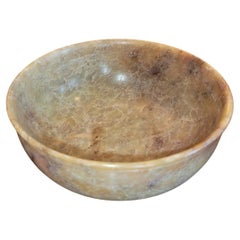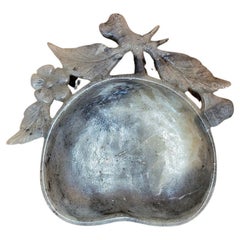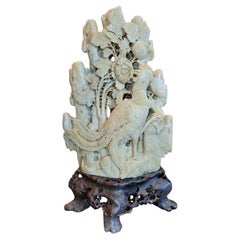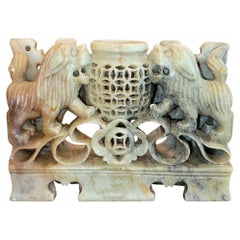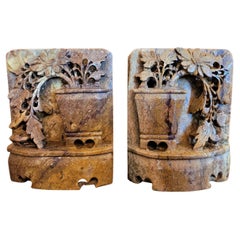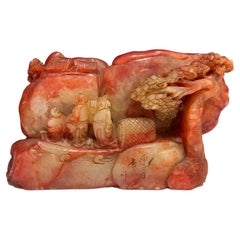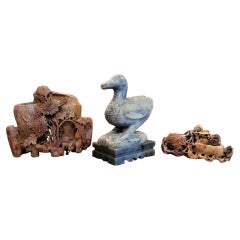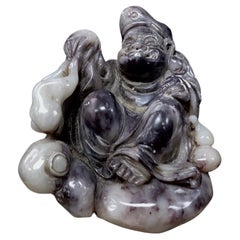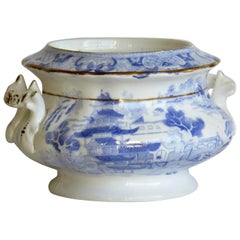Antique Chinese Seal
Early 20th Century Chinese Chinese Export Antique Chinese Seal
Soapstone
Early 20th Century Chinese Chinese Export Antique Chinese Seal
Soapstone
Early 20th Century Chinese Chinese Export Antique Chinese Seal
Soapstone
Early 20th Century Chinese Chinese Export Antique Chinese Seal
Soapstone
Early 20th Century Chinese Chinese Export Antique Chinese Seal
Soapstone
Early 20th Century Chinese Chinese Export Antique Chinese Seal
Soapstone
Early 20th Century Chinese Chinese Export Antique Chinese Seal
Soapstone
19th Century Chinese Qing Antique Chinese Seal
Soapstone
Early 19th Century English Chinoiserie Antique Chinese Seal
Porcelain
19th Century Chinese Antique Chinese Seal
Bronze
19th Century Chinese Qing Antique Chinese Seal
Stone
Late 19th Century Chinese Victorian Antique Chinese Seal
Soapstone
Early 19th Century English Georgian Antique Chinese Seal
Pottery, Ironstone
Late 18th Century English Regency Antique Chinese Seal
Porcelain
Late 18th Century Chinese Antique Chinese Seal
Wood
19th Century Chinese Qing Antique Chinese Seal
Porcelain, Wood
Early 1900s Japanese Meiji Antique Chinese Seal
Wood, Softwood, Lacquer
18th Century Antique Chinese Seal
Porcelain
18th Century Antique Chinese Seal
Porcelain
Late 19th Century Japanese Meiji Antique Chinese Seal
Bronze
1880s Vietnamese Chinese Export Antique Chinese Seal
Metal
19th Century Chinese Chinese Export Antique Chinese Seal
Ceramic
Late 19th Century Chinese Chinese Export Antique Chinese Seal
Porcelain
Late 19th Century Chinese Antique Chinese Seal
Wood
Late 19th Century Chinese Chinese Export Antique Chinese Seal
Porcelain
1860s Chinese Qing Antique Chinese Seal
Porcelain
Late 19th Century Chinese Chinese Export Antique Chinese Seal
Porcelain
18th Century Chinese Qing Antique Chinese Seal
Pottery
19th Century Chinese Campaign Antique Chinese Seal
Wrought Iron
Late 19th Century Chinese Chinoiserie Antique Chinese Seal
Wood
Late 19th Century Chinese Chinoiserie Antique Chinese Seal
Wood
Mid-19th Century Antique Chinese Seal
Fruitwood
Late 18th Century Chinese Antique Chinese Seal
Bronze
19th Century Chinese Qing Antique Chinese Seal
Porcelain, Hardwood
1760s English George III Antique Chinese Seal
Terracotta
Early 19th Century English Chinoiserie Antique Chinese Seal
Porcelain
Early 19th Century English Chinoiserie Antique Chinese Seal
Porcelain
Early 20th Century Chinese Chinese Export Antique Chinese Seal
Soapstone
Early 20th Century Chinese Chinese Export Antique Chinese Seal
Soapstone
Early 20th Century Chinese Chinese Export Antique Chinese Seal
Soapstone
Early 20th Century Chinese Chinese Export Antique Chinese Seal
Soapstone
Early 1900s Chinese Antique Chinese Seal
Stone
18th Century Chinese Qing Antique Chinese Seal
Late 19th Century Chinese Qing Antique Chinese Seal
Jade
17th Century Chinese Chinese Export Antique Chinese Seal
Porcelain
19th Century Chinese Qing Antique Chinese Seal
Soapstone
17th Century Chinese Antique Chinese Seal
Porcelain
Early 19th Century Chinese Antique Chinese Seal
Terracotta
Early 20th Century Chinese Chinese Export Antique Chinese Seal
Soapstone
Early 20th Century Chinese Chinese Export Antique Chinese Seal
Soapstone
19th Century Chinese Antique Chinese Seal
17th Century Chinese Antique Chinese Seal
Silver
Early 20th Century Chinese Qing Antique Chinese Seal
Rock Crystal
19th Century Chinese Antique Chinese Seal
Soapstone
Late 19th Century Antique Chinese Seal
Soapstone
Late 19th Century Antique Chinese Seal
Soapstone
18th Century and Earlier Chinese Antique Chinese Seal
Brass
19th Century Antique Chinese Seal
Late 19th Century Antique Chinese Seal
Porcelain
Late 17th Century Chinese Antique Chinese Seal
Porcelain
- 1
Antique Chinese Seal For Sale on 1stDibs
How Much is a Antique Chinese Seal?
- What is Chinese seal carving?1 Answer1stDibs ExpertApril 5, 2022Chinese seal carving refers to the traditional art of engraving the active side of a stamp or seal. Typically, the seals were made using stone, but bamboo, bone and wood could also be used. On 1stDibs, you can find a collection of authentic Chinese seal carvings from some of the world’s top sellers.
- 1stDibs ExpertApril 5, 2022The red seal on Chinese art is a way of communicating information about the piece. Depending on the artwork, the seal may say who produced it or who originally owned it. On 1stDibs, shop a wide range of Chinese art.
- 1stDibs ExpertNovember 4, 2024To identify antique Chinese furniture, look carefully at its details. Chinese craftsmen often built furniture using mortise and tenon joinery, eliminating the need for nails and screws. If you see this type of hardware, your piece is likely not at least 100 years old, especially if the hardware still looks new and shiny. Since antique furniture was handmade, you will normally see slight imperfections, such as tool marks or slight variations in carvings. Pieces that appear completely uniform and pristine are less often genuine antiques.
When present, maker's marks can also be helpful. Research the marks to learn more about when the maker was active and producing pieces like yours. Alternatively, you can have a certified appraiser or experienced antique dealer evaluate your furniture for you.
Shop an assortment of antique Chinese furniture.  PAGODA REDOctober 7, 2020
PAGODA REDOctober 7, 2020To determine the age of a Chinese furniture piece, look carefully at the joinery and finish. Natural expansion and contraction of the wood over time will cause a joint to protrude or retract, distorting a once-seamless fit. Antique lacquer finishes become crackled and worn over time. Areas of exposed wood, such as the underside of a table, the footrest of a chair, or the back of a cabinet should appear raw and dry compared to the finished surface. With use, the legs of tables and chairs become weathered near the bottom from precipitation and use.
 Lotus GallerySeptember 23, 2020
Lotus GallerySeptember 23, 2020The best way to know is to take it to an expert, such as an appraiser, reputable dealer or auction house, or museum
